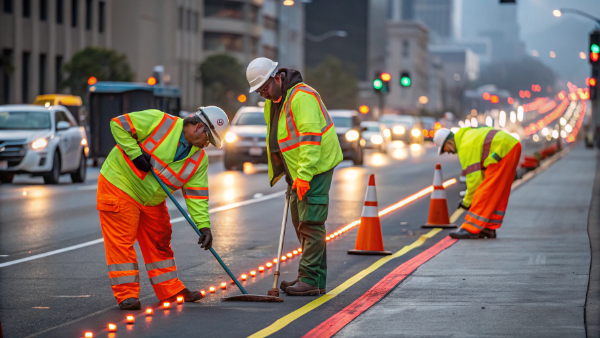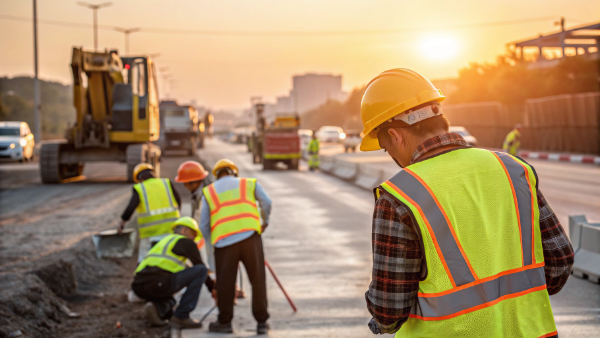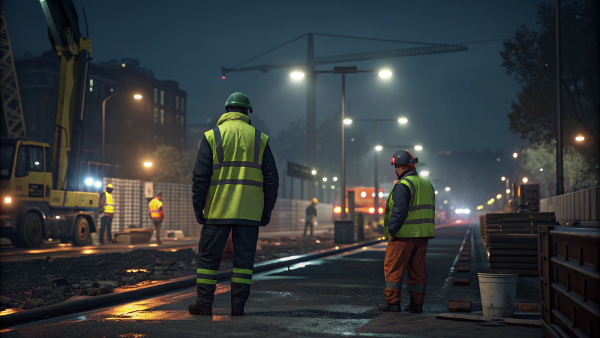Struggling to pick the right hi-vis gear for your team? Worried about meeting safety standards? We make choosing the best high-visibility workwear simple and effective for your business needs.
To choose the best hi-vis workwear, you need to assess workplace risks, ensure garments meet key standards like ANSI/ISEA 107, and select the right class, color, and material for full 360° visibility, comfort, and durability in your specific environment.
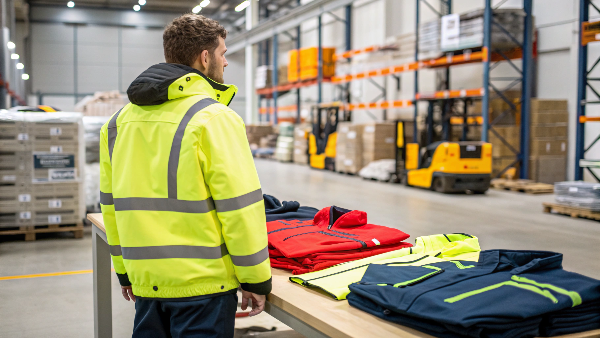
Choosing the right gear is more than just picking a bright color. It's about protecting your team and meeting legal standards. As a manufacturer for over 15 years, I've helped countless businesses navigate these choices. Let's break down exactly what you need to look for to make the best choice for your company.
Who makes the best Hi-Vis workwear?
Sorting through countless brands is tough. You need a reliable partner, not just a supplier. We believe the best manufacturer is one who guarantees quality, compliance, and deep customization1.
The "best" hi-vis workwear maker is a certified manufacturer that offers guaranteed compliance (like us at Vissafetywear with ISO and OEKO-TEX), provides deep customization1, and has a proven quality control2 record. This protects your business from costly recalls and safety failures3.
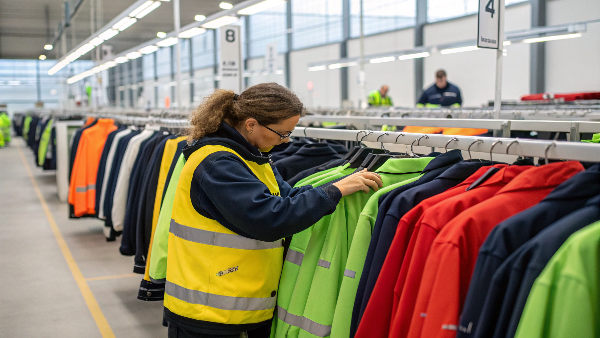
Over the years, I've seen firsthand what separates a great manufacturer from a risky one. The best partner is almost always the factory itself, not just a trading company. A direct manufacturer has control over the entire process, from sourcing materials to final inspection. I have a client in California, Danny Cheng, who I've worked with for 12 years. Before he came to us, he lost over $500,000 on a single order from another supplier due to color inconsistencies. That kind of mistake can ruin a business. It’s why we implemented a triple-inspection process: before production, during production, and a final check before shipping. This control ensures what you ordered is what you get. The "best" maker is one who acts as your partner, understands your market needs, and has the infrastructure to deliver consistently.
| Attribute | Direct Manufacturer (like Vissafetywear) | Distributor / Trading Company |
|---|---|---|
| Quality Control | Full control with multiple inspections | Limited to no control; relies on the factory |
| Customization | High flexibility for design, logos, materials | Limited options, often standard products only |
| Compliance | In-house labs and direct certification | Relies on documentation from other sources |
| Pricing | More competitive, no middleman markup | Higher costs due to added margins |
| Reliability | Consistent quality and stable supply chain | Risk of supplier switching and inconsistency |
What are the OSHA requirements4 for high-visibility clothing?
Confused by government regulations? Worried about fines or accidents? Understanding OSHA's requirements is the first step to ensuring your team is safe and your business is compliant.
OSHA doesn't have its own specific standard for hi-vis clothing but requires employers to protect workers from struck-by hazards5. It refers to standards like ANSI/ISEA 107. Employers must perform a hazard assessment6 and provide appropriate PPE7, which almost always means ANSI-compliant hi-vis apparel.
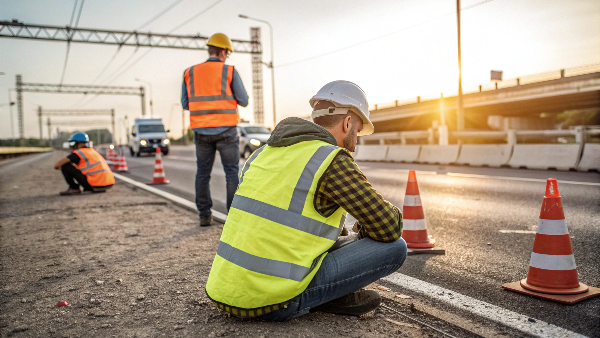
Think of it this way: OSHA sets the rule, and standards like ANSI/ISEA 1078 provide the solution. OSHA's General Duty Clause requires employers to provide a workplace "free from recognized hazards." For anyone working near moving vehicles or equipment—from road crews to warehouse staff—being struck is a major hazard. So, while OSHA might not say "you must use a Class 2 vest," they will say "you must protect your flagger from traffic." The accepted way to do that is by using gear compliant with ANSI/ISEA 107. We work with clients like Danny in the USA to ensure every product we ship meets these standards. This gives him, and his customers, complete peace of mind that they are not only keeping workers safe but are also fully compliant with OSHA's expectations.
| Authority | Role and Responsibility |
|---|---|
| OSHA | Mandates that employers must identify and protect workers from "struck-by" hazards. It is the law. |
| ANSI / ISEA | Publishes the technical standard (ANSI/ISEA 107) that details how to make garments visible and safe. |
What is class 3 high-visibility clothing9?
Does your team work in high-risk zones? Class 2 gear might not be enough. Class 3 hi-vis clothing offers the absolute maximum level of visibility, keeping workers safe and seen.
Class 3 high-visibility clothing offers the highest level of visibility protection10. It is designed for workers in high-traffic areas where vehicle speeds exceed 50 mph, complex backgrounds, or poor weather. It requires more material than other classes and must have sleeves and full-length trousers.
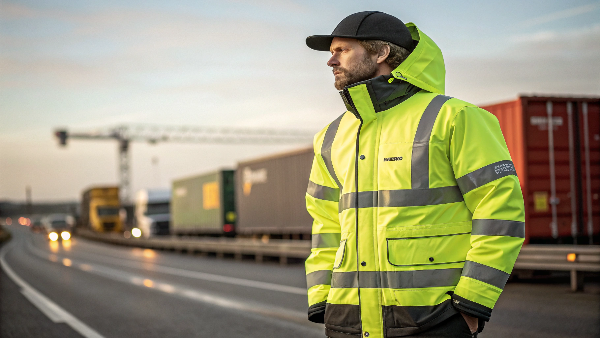
The key to understanding Class 3 is realizing it's about providing full-body visibility. It ensures a worker is recognizable as a human shape from all angles and distances, especially in chaotic environments. Imagine a highway crew working at night in the rain. A simple vest isn't enough. They need reflective material11 on their arms and legs to show movement and their overall silhouette. This is why Class 3 garments like jackets and coveralls have sleeves with retroreflective banding12. It's the highest level of protection for the most dangerous jobs. When we develop products, we always start with the end-user's environment. For clients who supply to major construction or state transportation departments, we engineer Class 3 apparel that not only meets the minimum material requirements but is also durable and comfortable for long shifts.
| Feature | Class 1 | Class 2 | Class 3 |
|---|---|---|---|
| Environment | Off-road, low-speed traffic (<25 mph) | Roadway, speeds 25-50 mph | High-speed traffic (>50 mph), bad weather |
| BG Material | 217 in² | 540 in² | 1240 in² |
| Reflective Tape | 155 in² | 201 in² | 310 in² |
| Garment | Vests | Vests, T-Shirts | Jackets with sleeves, Coveralls |
What is the ANSI standard for high-visibility clothing?
Hearing about ANSI standards but not sure what they mean? This standard is your guide to safety. Following it ensures your team's gear provides the protection they truly need.
The ANSI/ISEA 107 standard is the American National Standard for High-Visibility Safety Apparel. It specifies requirements for design and materials, including the amount of background and reflective material, color, and placement to ensure worker visibility around moving vehicles and equipment.
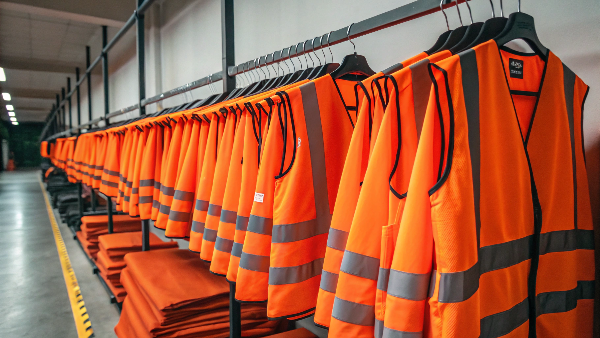
This standard is the technical playbook for safety. It’s what we, as a manufacturer, use every single day in our design and production processes. The standard has gotten more specific over time to better address real-world risks. It breaks down work environment13s into Types and then assigns Performance Classes based on the amount of visible material required. For example, "Type R" is for Roadway use, while "Type O" is for Off-Road. Within those types, you have Classes 1, 2, and 3. In our factory's lab, we have over 75 testing devices to ensure every roll of fabric and every inch of reflective tape meets these exact specifications for color, brightness, and durability. This commitment to the standard is non-negotiable for our B2B clients who can't afford the risk of providing non-compliant gear.
| Standard Element | Description | Why It Matters |
|---|---|---|
| Garment Types | Type O (Off-Road), R (Roadway), P (Public Safety) | Matches the garment design to the work environment13 risk level. |
| Performance Classes | Class 1, 2, 3 | Defines the minimum amount of visible material needed for that risk level. |
| Background Material | Fluorescent fabric (yellow, orange, red) | Provides visibility in daylight and dawn/dusk conditions. |
| Retroreflective Material | Reflective tape | Bounces light back to the source (headlights) for nighttime visibility. |
What is the difference between a class 1 and class 2 hi vis vest?
Choosing between Class 1 and Class 2? It looks simple, but the wrong choice can compromise safety. Let’s clarify the difference so you can protect your workers properly.
The main difference is the amount of high-visibility material. A Class 2 vest has significantly more fluorescent background fabric and retroreflective tape than a Class 1 vest. This makes it suitable for environments with higher vehicle speeds (25-50 mph), while Class 1 is for low-speed areas.
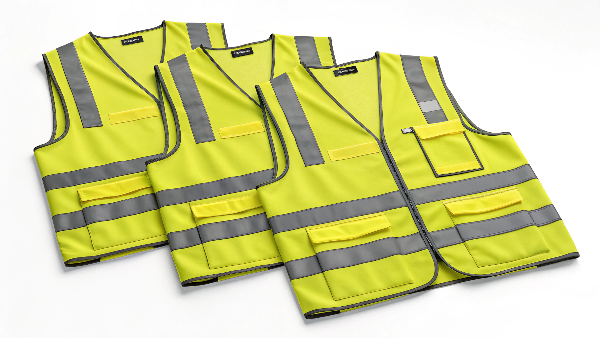
The decision comes down to risk. A Class 1 vest is for workers who are separated from traffic that is moving slowly (under 25 mph). Think of a parking lot attendant or a warehouse worker directing forklifts. Their primary need is to be seen by people who are close by and already alert. A Class 2 vest is for workers who are on or near roadways where traffic is moving between 25 and 50 mph. This includes road construction crews, utility workers, and school crossing guards. The extra material is crucial because it gives drivers more time to see and react from a greater distance. As a manufacturer, we produce both classes, but we always advise our clients to analyze the specific job site. It’s better to have more protection than you need than not enough when a life is on the line.
| Feature | Class 1 Vest | Class 2 Vest |
|---|---|---|
| Reflective Tape Min. | 155 in² | 201 in² |
| Background Fabric Min. | 217 in² | 540 in² (yellow/orange) |
| Use Case | Off-road, low traffic speeds (<25 mph) | Roadway, traffic speeds (25-50 mph) |
| Example Worker | Warehouse worker, parking attendant | Road construction worker, utility worker |
What color is best for high visibility?
Yellow, orange, or red? The color you choose is critical for worker safety. But is there one "best" color? The answer really depends on the work environment and background.
The best color for high visibility depends on the background. Fluorescent yellow-green is the most visible to the human eye against most backdrops. Fluorescent orange-red provides high contrast against natural environments like foliage and snow. Fluorescent red is effective in both daytime and low-light conditions.
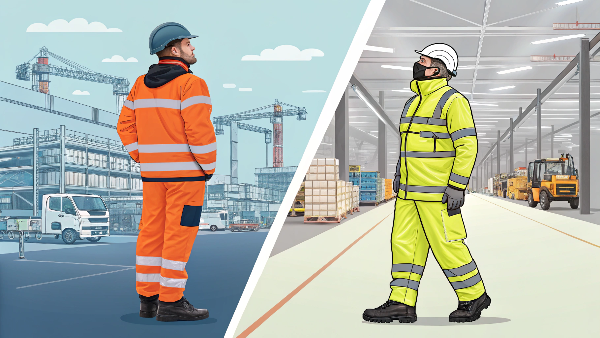
The goal is always contrast. You want the worker to stand out as much as possible from their surroundings. This is called conspicuity. Fluorescent yellow-green is scientifically the brightest color to the human eye, which makes it a great all-around choice, especially in urban settings with grey and black backgrounds. Fluorescent orange-red is fantastic for standing out against trees, dirt, and sky, which is why you see it so often on highway crews and railway workers. The specific choice can also be about company branding or distinguishing different roles on a job site. For instance, some sites use orange for workers and yellow for supervisors. We offer all three ANSI-compliant colors and often produce custom combinations to help our clients meet the unique needs of their customers.
| Color | Best For... | Why? |
|---|---|---|
| Fluorescent Yellow-Green | Most environments, especially urban | Brightest color in the visible spectrum; high contrast with concrete. |
| Fluorescent Orange-Red | Rural areas, construction, railways | High contrast against natural landscapes, dirt, and foliage. |
| Fluorescent Red | All conditions, including snow and low-light | Strong visibility, often used for public safety and emergency responders. |
Conclusion
Choosing the right hi-vis workwear involves assessing risks, knowing the standards, and partnering with a reliable manufacturer. We can help you protect your team and grow your business.
-
Find out how customization can enhance the functionality and branding of your workwear. ↩ ↩
-
Explore how effective quality control can prevent costly mistakes in workwear production. ↩
-
Understanding common safety failures can help you avoid costly mistakes in workwear selection. ↩
-
This resource clarifies OSHA's requirements, helping you ensure compliance and worker safety. ↩
-
Understanding struck-by hazards is vital for workplace safety; this link provides essential information. ↩
-
This guide will help you perform a thorough hazard assessment to choose the right workwear. ↩
-
This link provides insights into the critical role of PPE in ensuring workplace safety. ↩
-
This link offers a comprehensive overview of the ANSI/ISEA 107 standard, essential for ensuring worker safety. ↩
-
Discover the importance of class 3 clothing for maximum visibility in high-risk work zones. ↩
-
Explore the concept of visibility protection and its importance in high-risk work environments. ↩
-
Learn about the different reflective materials that enhance visibility and safety in workwear. ↩
-
Learn how retroreflective banding enhances visibility and safety for workers in low-light conditions. ↩
-
Explore how different work environments dictate the choice of hi-vis clothing for safety. ↩ ↩

